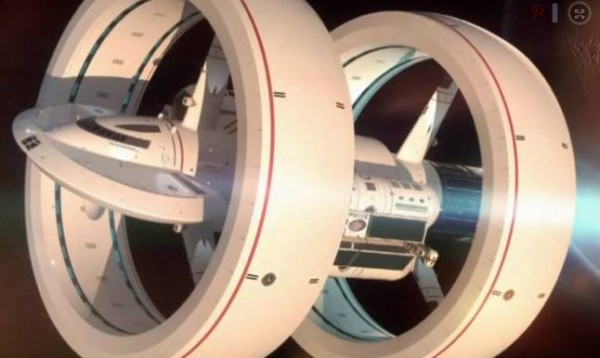NASA is Dead Serious About Developing a Faster-Than-Light Warp Drive Starship
| Arthur Dominic Villasanta | | Jun 13, 2014 01:44 AM EDT |
NASA's proposed warp drive starship
We all know the shortest distance between two points is a straight line. At least on Earth, that is.
But to travel the unimaginable distances in outer space, the shortest distance between two galaxies is to bend space and time. That's right, bend space and time.
As impossible as this sounds, this is precisely what a real "warp drive" based on the fictitional warp drive popularized by Star Trek intends to achieve. And physicists at NASA now say they truly intend to explore the feasibility of building a warp drive starship that can travel faster-than-light.
Like Us on Facebook
NASA first said it would look into developing a functional warp drive in 2010. Today, a team at NASA's Johnson Space Center is hard at work developing a warp drive.
NASA has released an illustration of what a warp drive starship might look like. The ship, appropriately named the IXS Enterprise, looks like a starship straight out of Star Trek. The name of this ship will undoubtedly send Trekkers to Trekker heaven.
Conspicuous in the illustration are two gigantic rings inside of which is a flying saucer-shaped section that reminds one of the USS Enterprise.
Those rings are the warp drive engines. New theories developed by Dr. Harold White and his NASA team are trying to fix problems in the Alcubierre Drive concept. This concept originally developed by theoretical physicist Miguel Alcubierre will permit faster-than-light travel.
Traveling faster than the speed of light is considered impossible under Einstein's theory of relativity. Dr. White's warp drive, however, will bend space around a starship using the Alcubierre concept.
A war drive engine based on the Alcubierre will bend the fabric of space around itself, shortening the distance to be traveled. An analogy is bending a sheet of thin plastic until both the ends are opposite each other.
Even stranger is that the NASA starship, which lies between the two rings that generate the warp field, would never actually travel faster than light. The starship will really be moving slower at the local level and thereby not violate Einstein's theory of relativity.
It's tough wrapping your head around building an engine that bends reality, but NASA seems intent on solving this problem.
Previously, Dr. White revealed a plan for interstellar travel that could see astronauts traveling to our closest neighbor star, Alpha Centauri, in only two weeks' time instead of the 4.7 years that light takes to make that enormous trip.
TagsNASA, Light, warp, Alcubierre, Science
©2015 Chinatopix All rights reserved. Do not reproduce without permission
EDITOR'S PICKS
-

Did the Trump administration just announce plans for a trade war with ‘hostile’ China and Russia?
-

US Senate passes Taiwan travel bill slammed by China
-

As Yan Sihong’s family grieves, here are other Chinese students who went missing abroad. Some have never been found
-

Beijing blasts Western critics who ‘smear China’ with the term sharp power
-

China Envoy Seeks to Defuse Tensions With U.S. as a Trade War Brews
-

Singapore's Deputy PM Provides Bitcoin Vote of Confidence Amid China's Blanket Bans
-

China warns investors over risks in overseas virtual currency trading
-

Chinese government most trustworthy: survey
-

Kashima Antlers On Course For Back-To-Back Titles
MOST POPULAR
LATEST NEWS
Zhou Yongkang: China's Former Security Chief Sentenced to Life in Prison

China's former Chief of the Ministry of Public Security, Zhou Yongkang, has been given a life sentence after he was found guilty of abusing his office, bribery and deliberately ... Full Article
TRENDING STORY

China Pork Prices Expected to Stabilize As The Supplies Recover

Elephone P9000 Smartphone is now on Sale on Amazon India

There's a Big Chance Cliffhangers Won't Still Be Resolved When Grey's Anatomy Season 13 Returns

Supreme Court Ruled on Samsung vs Apple Dispute for Patent Infringement

Microsoft Surface Pro 5 Rumors and Release Date: What is the Latest?










